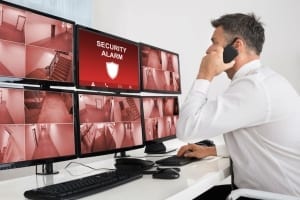Why It’s Important To Install Security Alarms for Companies

As a business owner, you must ensure that you are doing everything right for the company to run smoothly. The problem is that most business owners become too engulfed by the issues of the company that they forget to work on another equally-important element – the security of the company.
A security system like security alarms is something that every company should have not only to prevent robberies and thefts but also to save money and time. Of course, the last thing you would want is for your company to end up in jeopardy.
Installation of security alarms is already a widespread practice among homeowners, and it would also be a profitable investment for businesses.
If you still have doubts about reaching out to an alarm monitoring company and unsure if it is going to be beneficial to your business, take a look at the following reasons why it is essential to install security alarms for companies.
It Protects Your Company Building From Fire.
Security alarms are not only all about preventing illegal intrusions and theft. This system can also be an added layer of protection against fire. Modern security alarms now have early warning features to alert business owners about potential fire outbreaks.
A dedicated team of professionals monitors the security system to ensure that the right people in the company will immediately know about sources of heat and smoke. Heat and smoke detectors have become a popular element of a fire prevention technique.
A security alarm system will also notify the authorities so that they can respond to a building fire in no time. Prompt response from the authorities is essential since time is the most significant factor in any emergency. Immediate action from the monitoring team, the company, and the authorities could identify the difference between the safety of the company employees and the destruction of the building.

Due to the continuous development of technology, business security has never been more affordable, sensitive, and specific. Modern security alarms can now send updates to business owners through their mobile phones, enabling them to keep an eye on the security situation of their business at the comfort of their homes.
Real-time updates also mean peace of mind for business owners, even if they are away on a trip for a business meeting or extended vacations.
A multifaceted security alarm system now has complex coding systems and varying access levels, enabling business owners to secure private business information. These features take away the worry about external or internal burglary from the business owner. It’s because they are working with experts to ensure extra protection and safety of their company.
It Keeps Your Valuable Company Assets Safe.
Investing in a security alarm system for a few hundred dollars will save you lots of money in the long run. A security system deters thieves from breaking into your company building just by the thought that you have a security alarm in place.
Having security guards is not enough since thieves have become more sophisticated these days in terms of their methods for breaking into a building, and they can get past the guards quickly. Not to mention the fact that thieves have also improved their weaponry and can take down a small security force, like a piece of cake.
With a security alarm installed in your company, the relevant authorities get notified, and police can immediately help out in neutralizing the thieves. This is why company owners, as well as those who maintain commercial buildings for rent as their business, should get a security alarm system installed as soon as possible.
It Prevents Unethical Employees From Stealing Company Cash.
Have you ever wondered why your company is suffering despite hitting your target sales each month? If so, then you can assume that an internal burglary is happening in your business, and someone from your employees is the culprit.
You can prevent this kind of scenario in your company with the help of a security alarm. The security system enables you to monitor the behavior and activities of your employees. It makes sure that they are not taking out money from the company illegally.
It Lets You Focus More On Running Your Business.
While the security of your company is essential, you cannot afford to spend all your time worrying about it and forget about the other things that matter in your business.
Having a security alarm system installed in your company building gives you the peace of mind knowing that your business is protected and safe. This way, you can focus more on what you do best – running, and growing your business.
Conclusion
A security alarm system is a necessity for companies nowadays, and there is no doubt about it. It is one of the best decisions a business owner can make in the face of a rising rate of crimes related to robbery and burglary. A security alarm is one of the security priorities for the growth of your business.
Environmental Impact
Though the above steps are useful in moving towards an eco-friendly future, it’s important that you always consider the environmental impact of any work that you carry out. For example, if you were planning on constructing more commercial buildings – your focus should not only be on obtaining land but instead should focus on obtaining the right kind of land. For example, you may need to carry out ecological surveys ahead of time if the construction of your next commercial property could interfere with animals or wildlife. This is due to the fact that many animals, such as bats, are classified as a protected species – meaning certain steps must be taken ahead of time to maximize their safety.
Therefore, it is within your best interest to work with companies that provide bat surveys for professional ecologists, as this means they can perform routine surveys to figure out whether any bats are living in the area in which you intend to build upon. Working with these companies means that you can continue with your construction without damaging animal life – thus clearly demonstrating your commitment to a greener planet.





